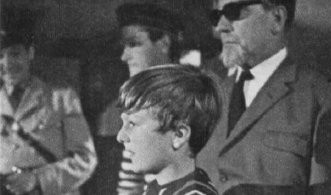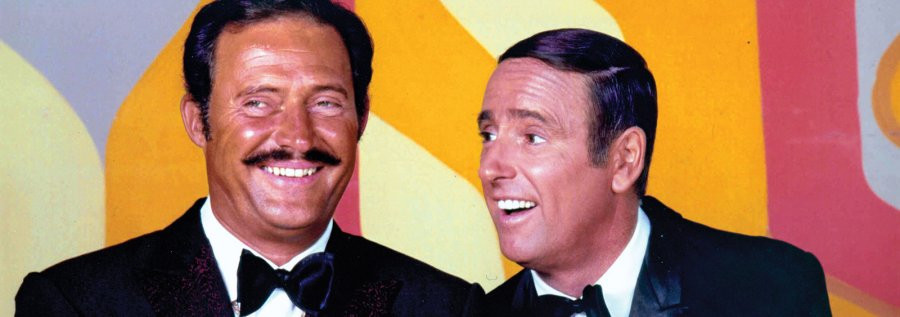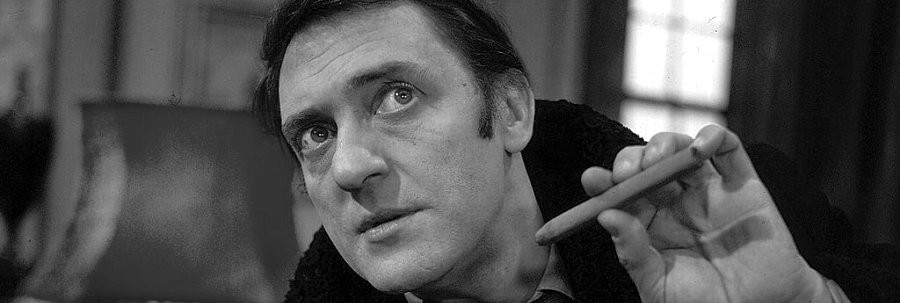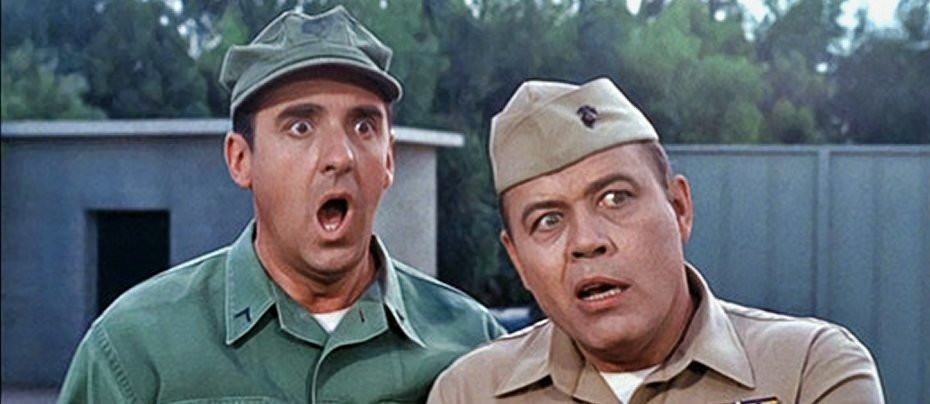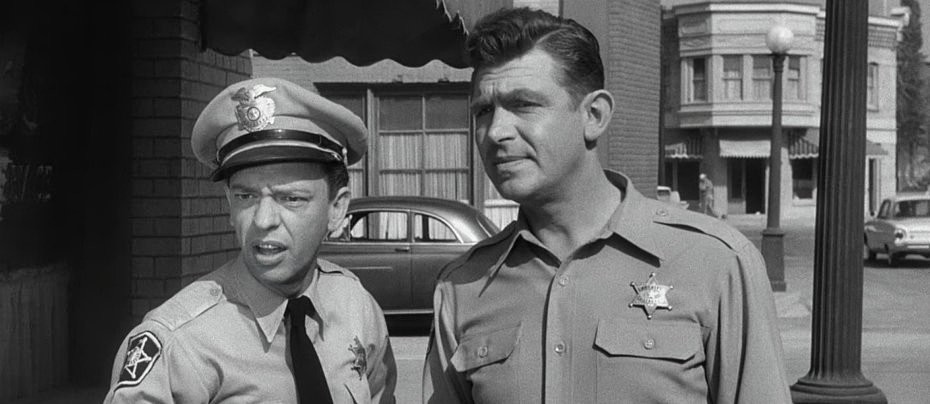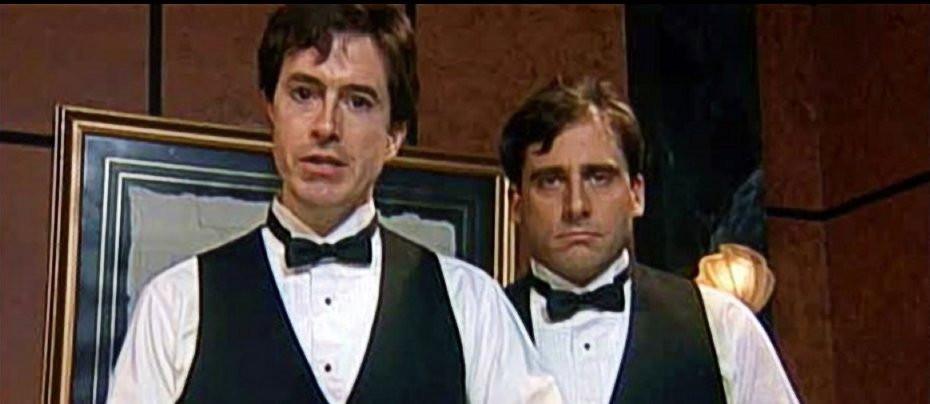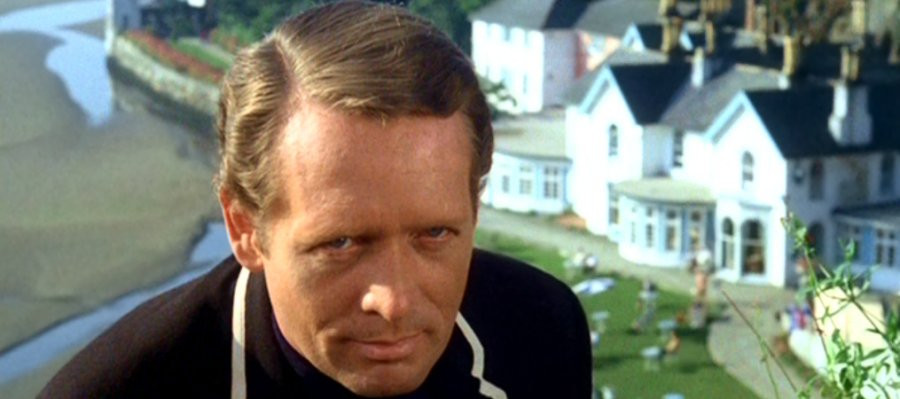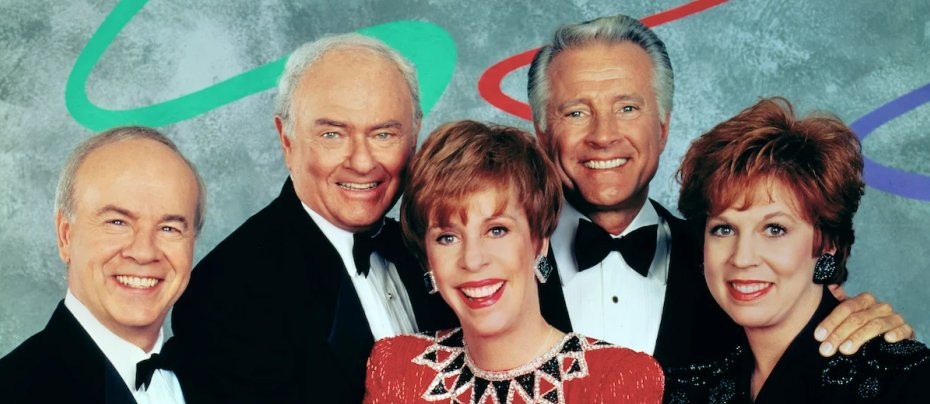
The Carol Burnett Show
1967 - United StatesFor an hour each week, Carol Burnett and her talented co-stars (Vicki Lawrence; Lyle Waggoner; Harvey Korman and (later) Tim Conway) spoofed everything from movies to commercials; performed in slice-of-life skits (one of which would later be a TV series of its own); and generally cracked each other up before the live studio audience that came for the taping of what became one of the USA's best loved comedy sketch shows of all time.
The multtalented Burnett could play everything from a cleaning woman to a femme fatale, thanks to her lithe body, incredible facial expressions and that wonderful booming voice. (She could also sing and dance with ease.) The Carol Burnett Show debuted on September 11th 1967, and at first the show looked as though it would not succeed. Variety series with female hosts were seldom successful in the US; and unlike the hit 'Smothers Brothers Comedy Hour' and soon-to-debut Rowan And Martin’s Laugh-In, Burnett’s new show was far from politically topical. Besides, with those exceptions (and that of The Dean Martin Show), hosted variety shows seemed to be on the way out.
But The Carol Burnett Show not only survived, it thrived.
Burnett’s versatility helped sidestep the problem of a predictable format. And Burnett was wise enough to surround herself with a talented supporting team. Harvey Korman proved to be an excellent comic counterpoint for Burnett. Newcomer Vicki Lawrence proved her ability to keep up with the veteran performer. (She also became a singing star for a brief time; a song that Cher reportedly turned down--The Night The Lights Went Down In Georgia--became a number-one hit for Lawrence in 1973.) Handsome Lyle Waggoner was the perfect straight man in dozens of skits and sketches. Burnett’s friend, actor and singer Jim Nabors (who was starring in the hit sitcom Gomer Pyle, U.S.M.C. at the time) was the show’s first guest host; Burnett considered him a 'lucky charm' and Nabors appeared on each season opener for the next decade. (By contrast, the final episode of every season featured just Carol and her supporting cast, known as 'The Family.')
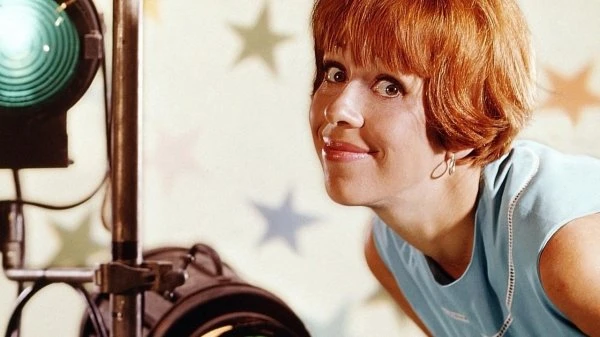
During its second season, The Carol Burnett Show was ranked among the top-25 series; in 1970, the variety show was among the 15 most-popular shows for the year. (The show was also part of the now-legendary CBS Saturday night schedule of the 1973-94 season, which included All In The Family; M*A*S*H; The Mary Tyler Moore Show and The Bob Newhart Show.)
Besides the take-offs of TV shows, movies and commercials, the best-known segments of the show included Carol’s short question and answer session with the studio audience and continuing skits featuring Burnett as secretary Mrs. Wiggins. But perhaps the most successful character for Burnett, along with her famous cleaning woman character was her portrayal of 'Eunice'--a woman whose dreams of doing better for herself were thwarted by her no-good husband Ed (Korman) and the bombastic Mama (played with relish by Lawrence, who aged herself with makeup, a gray wig and extra padding underneath her hand-me-down dresses). The segment became so popular, that in March 1982, CBS aired a 90-minute special featuring the characters. A year later, (not unlike Jackie Gleason’s Honeymooners of the 1950’s) the skit became a half-hour sitcom called Mama’s Family. Starring Lawrence, Ken Berry, Dorothy Lyman and Rue McClanahan, the NBC show also featured guest appearances by Korman, Burnett and Betty White.
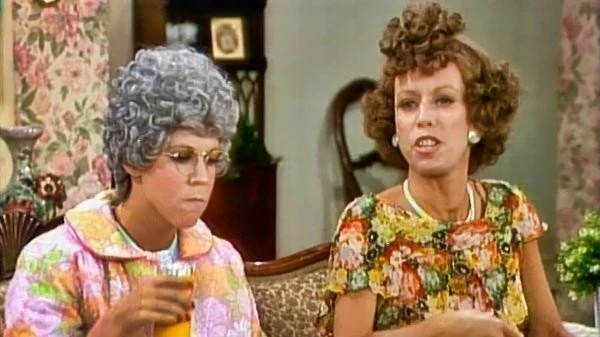
Of all the parodies performed on The Carol Burnett Show, probably the best-remembered and funniest was an inspired takeoff of the classic film Gone With The Wind. Airing 13 November 1976, Burnett played the spoiled Southerner Starlett O’Hara. She tries to tempt the handsome Rat Butler (Korman) by quickly pulling down some drapes from her mansion to make an elegant dress--curtain rod and all.
Rat: That gown is gorgeous!
Starlett: Thank you. I saw it in a window, and I just couldn’t resist it.
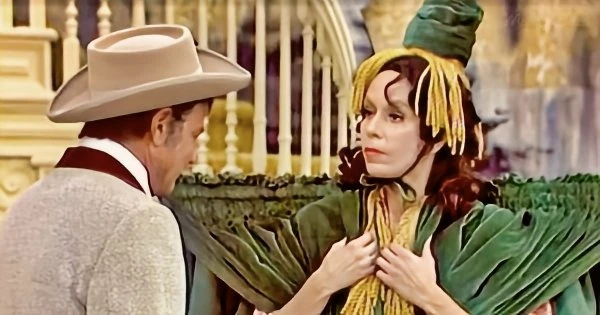
Twenty-three years after it aired, the skit was named the second-funniest (US) television moment of all time by TV Guide magazine.
In 1974, Waggoner left the show to pursue new roles. (His most-famous post Burnett role was that as co-star to Lynda Carter in the fantasy super-hero show Wonder Woman.) Funnyman Tim Conway, a frequent guest, helped fill the void left by Waggoner; he became part of the regular cast in 1975. Conway’s ability to come up with on-the-spot jokes and his facial expressions usually made the rest of the cast crack up on the air.

In 1977, Harvey Korman was lured away from the show with an offer to do his own series on rival ABC. Needing a strong male comic anchor who could also do straight roles, Burnett turned to sitcom and variety veteran Dick Van Dyke. But Van Dyke found himself playing second fiddle to Burnett (whose name, after all, was in the show’s title) and the hoped-for chemistry between the two comic greats was lacking. Three months after he arrived, Van Dyke abruptly left. After eleven years it was time for new challenges for Burnett and with ratings for the show declining the star decided to pull the plug. The two-hour finale on 29 March 1978 featured past highlights and new skits, before Carol Burnett sang I’m So Glad We Had This Time Together and tugged her earlobe for the final time.
In spite of trying to revive the format in later years it's the original Carol Burnett Show that is remembered with the greatest affection by the stars legions of fans. These days, Carol Burnett enjoys her private life and performs only when she wants to. For many, she doesn’t appear on television often enough. But her comic legacy is brighter than ever, thanks to reruns and collections on both videotape and DVD. Despite her major status in the USA, Burnett remains relatively unknown in the UK with only 13 editions airing on BBC2 in the summer of 1970. But this was to Britain's loss. In 1993, TV Guide named Burnett the best comic actress of the 1960’s, calling her "our sweet, vulnerable, national clown." And no one fit that description better than Carol Burnett.
Seen this show? How do you rate it?
Seen this show? How do you rate it?
Published on December 3rd, 2018. Written by Mike Spadoni (June 2001) for Television Heaven.


